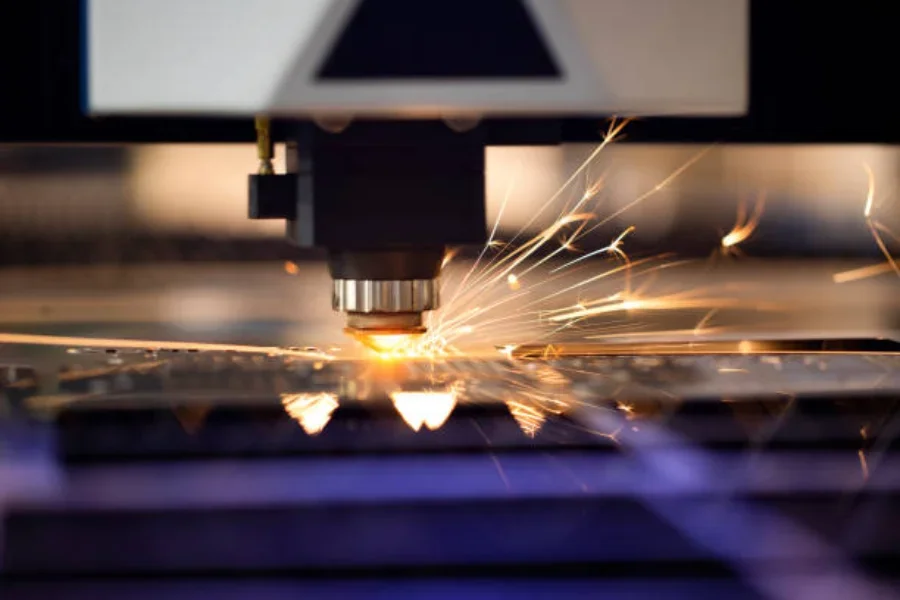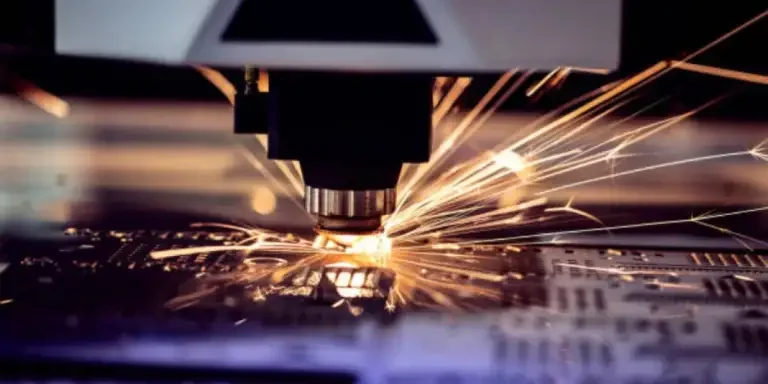Laser drilling is a unique method for drilling holes into different materials using laser light. The process of laser drilling comes with many benefits compared to mechanical drilling, making it one of the best solutions in the manufacturing process.
Read on to find out the main advantages of laser drilling and the different models of laser drilling.
Table of Contents
What are laser drilling machines?
Modes of laser drilling
What are the main advantages of laser drilling?
Conclusion
What are laser drilling machines?

Laser drilling machines are a fast and precise way of creating various types of holes having different geometries. The machines drill materials ranging from the most fragile to the hardest. Laser drilling is a process that leverages thermal energy from laser light to cut out holes or other shapes into materials. In contrast, the other drilling processes use a rotating physical drill cut to scoop out material from a workpiece.
A workpiece is exposed to laser light to melt the material and vaporize it into the surrounding environment. As a result, laser drilling does not produce swarf-like components compared to the other drilling processes.
Normally, laser drilling does not involve a continuous beam to cut holes into workpieces but pulses of laser light. Each pulse burns and vaporizes the unwanted material off the workpiece to achieve the desired result on the end product. Laser machines drill any type of material with extreme precision.
Modes of laser drilling
1. Direct drilling
Direct drilling produces a hole in one laser pulse (a single shot). It is a fast technique but has a limited achievable hole depth and gives a significant degree of hole taper.
2. Percussion drilling
Percussion drilling fires a train of pulses at a fixed position on the workpiece. The pulses flow consecutively while removing small layers of material to deepen the hole. As a result, this drilling process is suitable for high-quality small-diameter holes with high aspect ratios.
3. Trepanning
Trepanning has an initial hole quickly drilled to pierce the material. The laser beam is then moved around the perimeter to achieve the desired hole. This process effectively cuts the hole rather than drilling it. The result is high-quality holes with large diameters. Nonetheless, the trepanning process is slower compared to both percussion and direct drilling.
What are the main advantages of laser drilling?
1. Superior speed

The highest speeds in any hole-forming process have been registered by laser drilling machines. It takes approximately 1 second to drill a hole in many applications. Protons have no mass; thus no inertia overcomes positioning forces apart from that of the optical system. Fast speed is also registered by high-quality beams with excellent focusability. The beams have a high amount of energy density with bursts of peak power. As such, lasers have the capability to penetrate and drill metals faster.
2. High accuracy
Laser drilling achieves a high level of accuracy due to its automation. Generally, a typical laser beam width is about one-fifth of a millimeter. The beam can focus approximately 1000 to 2000 watts of energy and efficiently drill through any type of workpiece. It effectively penetrates to a depth of about 20 millimeters with an estimated accuracy of 95.96%.
Lasers can easily approach angles as low as 15 degrees without process changes. Moreover, they do not require any mechanical adjustments to switch between varied hole sizes and irregularly shaped holes. Through absorption, laser drilling controls depth in blind holes. In this case, a buyer can choose the desired wavelength which has low absorption in the landing material and high absorption in the target drill material. Additionally, precise spatial and temporal profiling of laser emission can achieve control depth accuracy within a few microns in homogeneous materials.
3. Reduced cost
In spite of the high initial cost, there is no drilling bit to wear or break when it comes to laser drilling. Also, there are few or no consumables in the laser. As a result, component costs are eliminated and time is saved as there is no need to replace consumables. Laser drilling produces the highest return on investment compared to other drilling processes.
4. Versatility

Laser drilling has a high aspect ratio—i.e., depth-to-width ratio. The beams do not face any frictional resistance. Therefore, the depth of the drill can only be limited by the optical configuration and the dynamics of the material used. For instance, buyers can easily drill holes with a 30:1 aspect ratio in some materials. Notably, lasers can produce holes that are 10 times smaller than those produced by conventional drill bits.
5. Minimized heat effect
Laser involves drilling with a photolytic process. This is a chemical reaction where a compound is broken down by protons instead of cutting or melting through friction. Virtually, the process has no recast layer. Also, the non-contact technique enables laser drilling to reduce the effect of heat produced on the workpiece. There is absolutely no physical contact between the moving parts and the workpiece. This prevents any possibility of contamination of the workpiece and wearing of the drilling component.
6. Applicability

The ability of a laser to remove material from a workpiece is primarily dependent on the absorption of the target material. This simply means getting the correct wavelength. The wide spectrum of materials drilled using lasers ranges from rubber, wood, and ceramics like diamonds to metals with high hardness.
Conclusion
Laser drilling is one of the latest drilling processes. It involves relatively high initial costs compared to other drilling processes. As a result, it is not used in many industrial applications. Laser drilling is generally limited to aerospace engines, automotive blocks, and printed circuit boards (PCBs). However, buyers have the edge to produce small holes with utmost precision and a high aspect ratio. Lasers are worth the investment because they offer high effectiveness and efficiency in drilling. To acquire affordable and quality laser drilling equipment, visit Alibaba.com.




